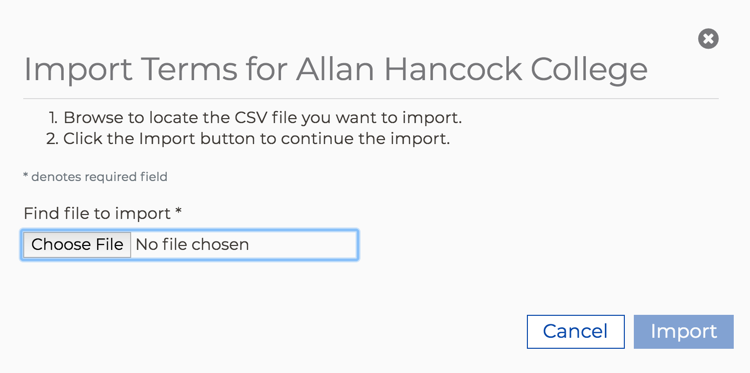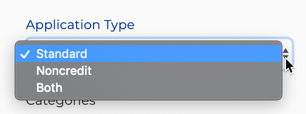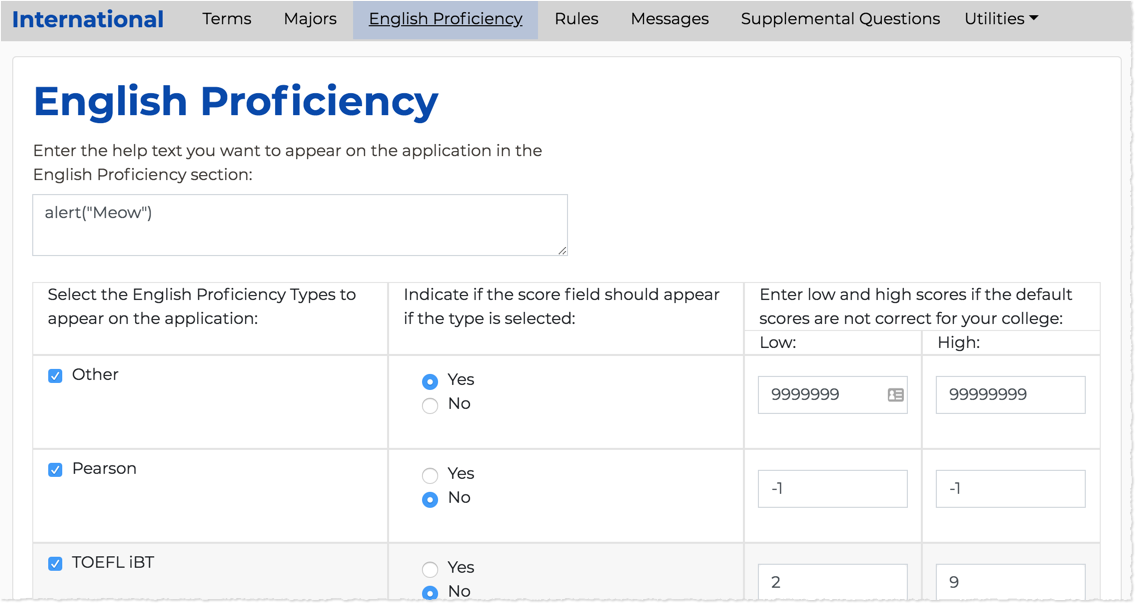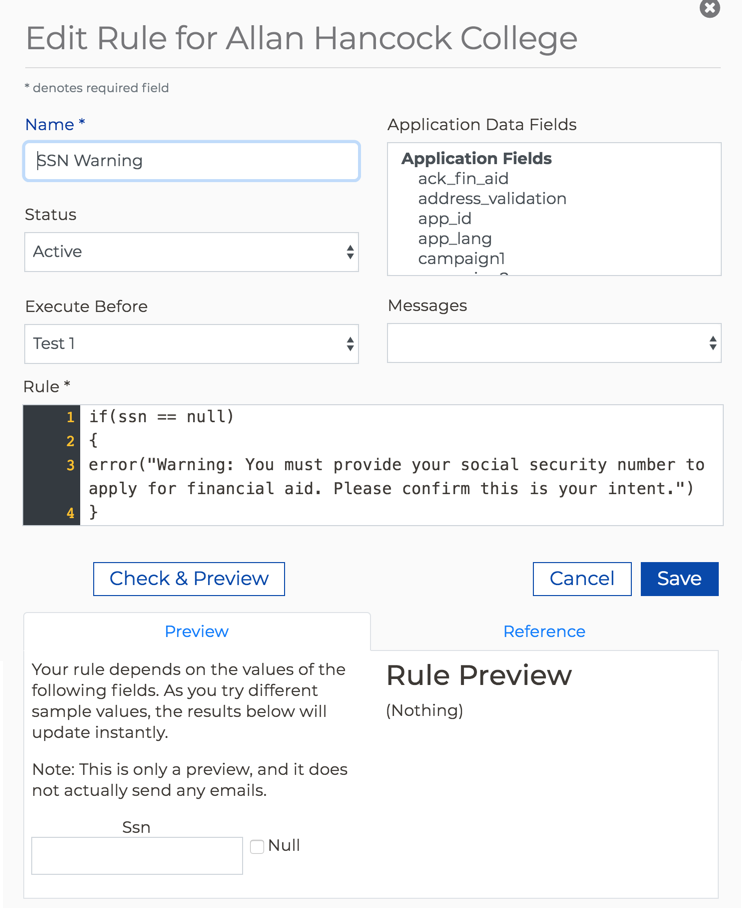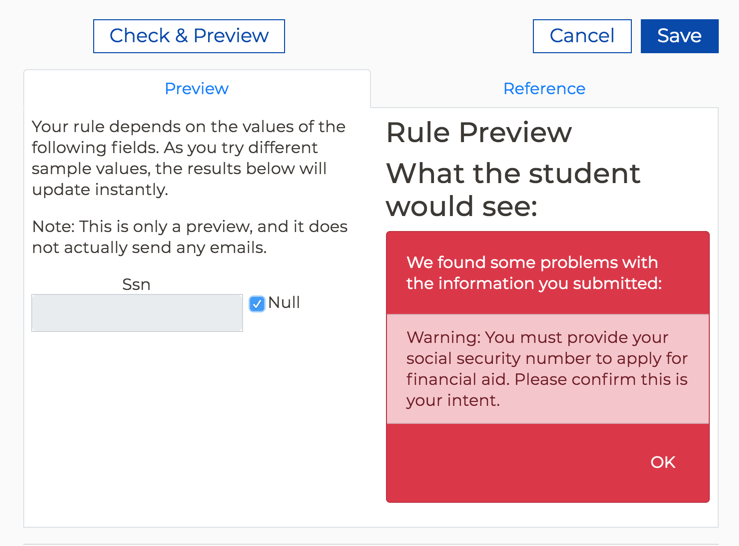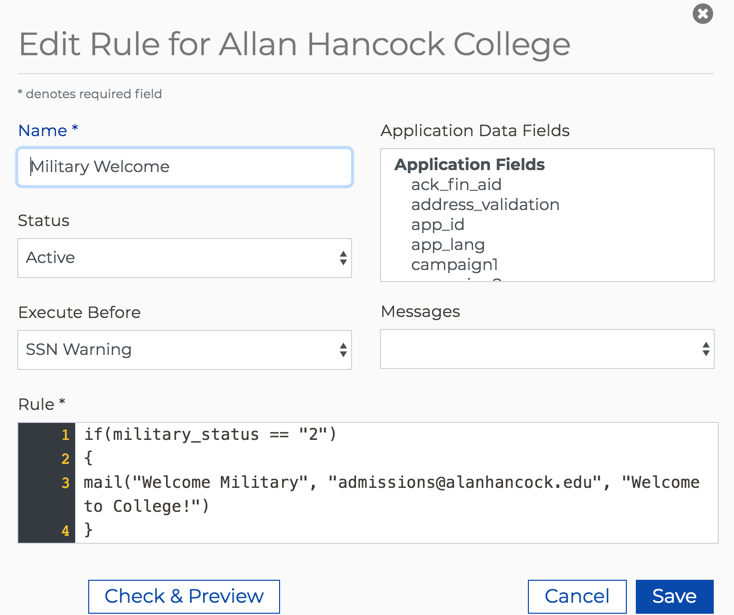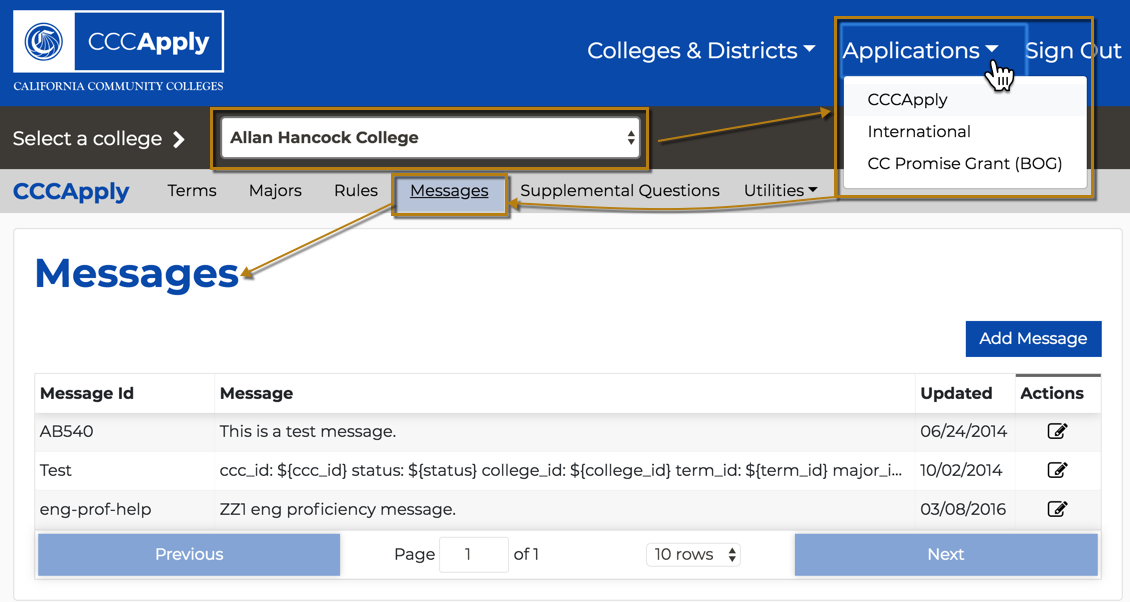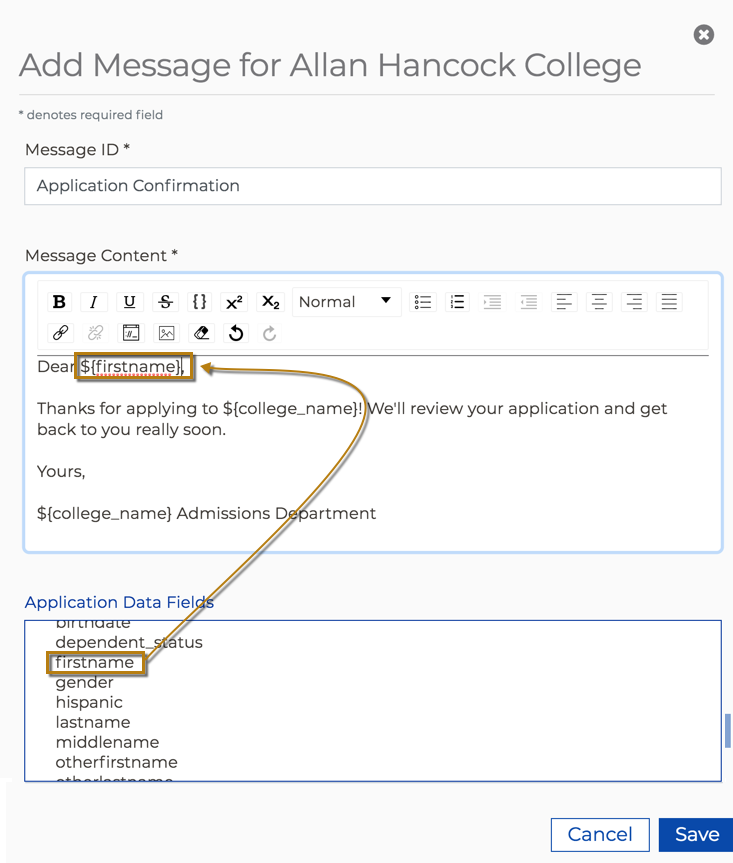...
| Note |
|---|
Getting to the new CCCApply Administrator requires staff users to sign in to the CCC Administrator using their college-specific URL. Click here to find Administrator URLs or contact College Support Services at staffsupportccctc@openccc.zendesk.com |
...
System Administrator
(Applications->System Administrator)
The System Administrator module provides:
SSO-based authentication to all CCC colleges through custom college-specific URLs configured to their college or district IdP
User management for all authorized CCC college staff and faculty users
Access management to all integrated CCCTC administrator applications and services through a single point-of-entry
User Manager
(Applications->System Administrator->User Manager)
The User Manager module allows authorized users to view, add, edit, and delete* users within the scope of their own authorized user permissions. The User Manager section provides the ability for users with authorized role(s) to create new users and permissions for your college or district.
...
Launching the CCCApply Administrator
(Applications->CCCApply Administrator)
If your credentials include permission to configure the CCCApply Standard application, CCCApply International application, and/or CC Promise Grant (BOG Application) for your college or district, you can access those via the CCCApply Administrator.
...
The Terms module is where you can add, edit, archive (functions as a delete in the CCCApply Administrator), import, and export your custom college terms. This The Terms module is available only for the CCCApply (Standard & Noncredit) and International applications. Terms have a required start and end date that determines which terms display in the Term Applying For drop-down list the CCCApply and International applications.
| Note |
|---|
The “term start date” is used to determine the residency determination date (RDD) in the CCCApply Standard Application (only), which is the day before the first day of the term (Start Date), for each term configured by the college. The RDD is used extensively across the CCCApply application to identify data fields/questions that are used in the residency algorithm to determine the “preliminary residency status” for the student upon submission of their application. See the CCCApply Standard & Noncredit Application Specification and Data Dictionary, “Appendix A: Submission Calculation Logic & Residency Algorithm" for details. |
...
Have ready an edited .csv file of terms for importing. See /wiki/spaces/PD/pages/758546724 Editing the Exported Terms CSV File for details.
From the Terms Summary table, click Import Terms to display…
...the Import Terms dialog box:Click Choose File to display your computer’s file navigator.
Navigate and select the terms .csv file you want to import. The file name for the file you selected displays next to the Choose File button.
Click Import to import the terms .csv file, close the Import Terms dialog box, and display the Terms Summary table where all rows are replaced/updated and the terms list refreshes to match your imported values.
...
CCCApply vs. International Majors: If you choose CCCApply from the Applications drop-down list and define a major, and then select International from the Applications drop-down list, the major you just defined for the CCCApply Standard application will not appear in the Majors table for the International application. If you want a given major to be available on both applications, you must create it separately for each application. Or, you may import the major (or list of majors) into both applications (i.e. you can create majors in one application, /wiki/spaces/PD/pages/758546724, and then /wiki/spaces/PD/pages/758546724 export those majors, and then import those majors into the other application).
CCCApply vs. Noncredit Majors: If you choose CCCApply from the Applications drop-down list and define a major, and you want that major to also display for the Noncredit application, you will want to select Both from the Application Type drop-down list in the Major dialog box when manually creating a major. Otherwise the major defaults to Standard application display. As with the International application, you can choose to import the major (or list of majors) into both applications.
...
Field | Best Practice | ||||||
|---|---|---|---|---|---|---|---|
Major Description | Enter your college’s description for a particular major, in 100 characters or less.
| ||||||
Major Code | Enter your college’s code for the major, up to 30 characters.
| ||||||
Major Start Date | Enter the date when this major will start being available for selection by an applicant in either the CCCApply or International application(s)’ Intended Major or Program of Study drop-down list. | ||||||
Major End Date | Enter the date in which this major will no longer be available for selection by an applicant in either the CCCApply or International application(s)’ Intended Major or Program of Study drop-down list. For a major to appear in the application’s drop-down list, the current date must be between ‘major:date_start’ and ‘major: date_end’ (inclusive). If you do not want to end-date your major, you must select the Major has no end date check box. | ||||||
Major has no end date check box | Select this check box if the major will have no end date. When this check box is selected, the Major End Date field becomes hidden. | ||||||
TOP Code | Using this field is OPTIONAL: Enter the major’s six-character Taxonomy of Programs (TOP) code from the CCCCO (Chancellor’s Office). See Understanding TOP Codes for more details.
| ||||||
Program Control # | Using this field is OPTIONAL: Enter the unique code for every major or program of study from the Chancellor’s office. May be used to identify CCCCO Program Control Number.
| ||||||
Application Type | You can select an option from the Application Type drop-down list so that the major you are configuring will display in only the Standard application, Noncredit application, or both. | ||||||
Categories | Using this field is OPTIONAL: Major categories can be added, edited or removed by the college to filter or group their list of majors that appear in the CCCApply applications. Major categories are customized by each college. The new, optional Major Categories field allows you to align as many custom categories to a single major so that students are guided systematically to their educational goals. The values you enter in the Categories field for a major display in the Major Category drop-down list in the CCCApply and/or International applications, and affect which majors display in the Intended Major or Program of Study drop-down list.
When you enter a value in the optional Categories field for a major you must press the Enter key in order for your entries to be accepted (and then displayed beneath the Categories field).
See /wiki/spaces/PD/pages/758546724 for further details. | ||||||
CIP Code | Using this field is OPTIONAL field. If you choose to populate the CIP Code field, enter the Classification of Instructional Programs (CIP) code. | ||||||
Award Type drop-down list | REQUIRED. Select the optional award type that the major aligns to from the Award Type drop-down list. |
...
CSV Column Heading | Required | Important Configuration Notes | ||||
|---|---|---|---|---|---|---|
Header Row | YES | IMPORTANT: The header row is required in order for your .csv file to import correctly and the values to be stored properly by the CCCApply Administrator. | ||||
Application | YES |
| ||||
Major Code | YES |
| ||||
Major Description | YES |
| ||||
Category | NO |
| ||||
TOP Code | NO |
| ||||
Program Control Number | NO |
| ||||
Award Type (AwardType) | YES | The Award Type (AwardType) field values are slightly different in the new Admin 2.0 system. The following notes pertain to implementing this field in the new system:
| ||||
Application Type | NO |
| ||||
CIP Code | NO |
| ||||
Education Goals (eduGoals) NOT APPLICABLE in this version | NO | Leave this column in place and leave it empty.
| ||||
Start Date | YES |
| ||||
End Date | YES |
| ||||
Create Date | NO |
|
...
| Warning |
|---|
The Major Category filter can be implemented for the CCCApply and/or the International applications, but must be configured for each application separately. |
Implementing the Major Category Filter
You can implement the major categories /wiki/spaces/PD/pages/758546724 manually or, more efficiently, by /wiki/spaces/PD/pages/758546724 importing them. Colleges must define their list of major categories and then align those categories to each major or program of study for their college.
To get started colleges should complete the The Major Category Implementation Worksheet, which provides a comprehensive step-by-step guide for setting up the Major Category field in CCCApply.
Disabling the Major Category Filter
The Major Category filter in CCCApply and/or International can be turned off by removing all custom categories created in the CCCApply Administrator’s Major module Categories field for every major. Once all Categories values for all majors are removed the Major Category drop-down list will not display in the CCCApply and/or International application. The Intended Major or Program of Study drop-down list will revert back to displaying the full list of majors and programs in alphabetical order (by Major Description).
...
Configuring the English Proficiency Section
The English Proficiency module is where you configure the English proficiency section displayed on the International Application for your college, indicating the proficiency types that can be selected, whether score fields display, and low/high scores required for your college.
...
8. When you select a Yes radio button to require the score field to appear if the proficiency type is selected, the Low and High score fields become enabled and allow you to enter a low and high test range for that particular test that are accepted by your college.
...
Configuring Application Rules
The Rules module is where you create and configure automatic actions that run when a student submits an application. You can also edit and delete rules. You can apply rules to either the CCCApply or International application (rules are not applicable for the CC Promise Grant application).
When you have an active rule in place for either of the applications, any normal application field calculations occur prior to the rule running, so that the rule can validate correctly against accurate data.
Rules Module Basics
Creating rules for the CCCApply and/or International application involves selecting application fields to be used as rule triggers; if using multiple rules, configuring the order in which each rule executes; for email rules, selecting the message that will display; and, finally, writing the rule itself and previewing it for accuracy.
...
Email Rules | Error Messaging Rules |
|---|---|
A customizable email can be sent to the student and/or to a college staff member upon application submission, depending on how the student filled out the application. Note: This requires a message be created in the /wiki/spaces/PD/pages/758546724. | The application can be validated for specific errors and its submission prevented along with immediate messaging indicating to the student the remedy so they can correct and re-submit the application. Note: You do not need to create messages for rules that report an error to the user in the application. Messages for error rules are entered directly in the rule definition itself. |
| Warning |
|---|
Adding a Rule around a Boolean Field When adding or editing a rule that includes a boolean field, there should be no quotations around the values: true, false or null. This applies to ALL boolean fields. For example: if (dsps == true) OR if (athletic_interest == false) See the rule examples provided in the Reference tab of the Rule Preview box for more examples. |
Adding a Rule
Use the following steps to create a new rule.
...
Enter (or copy/paste) the following rule text in the Rule field:
if(ssn == null)
{
error("Warning: You must provide your social security number to apply for financial aid. Please confirm this is your intent.")
}Note that the keyword “error” is followed by a parenthetical statement consisting of the error message text you want to display based on the “if” condition.
Click Check & Preview to validate the rule and to display any parameterized fields.Select the Null check box to display a preview of the error message:
Note that the Rule Preview shows (Nothing) since the conditions for the warning message to display are not yet met (i.e. snn == null).Select the Null check box to display a preview of the error message:
Once you’re satisfied with your rule’s preview, click Save to save the rule. The Add Rule dialog box automatically closes and your saved rule displays in the Rules table.
After a caching delay of 30 minutes you can then submit a test application in your Pilot environment that meets the requirements for triggering the error message in order to test it and see the result.
For a student who has not provided their SSN number in their CCCApply application the following error message displays when they click Submit my Application:
...
Editing a Rule
Use the following steps to edit a rule.
Select the Edit icon on the row for the rule that you want to edit.
This displays the Edit Rule dialog box.Make your edits and click Save to save your changes. The Edit Rule dialog box automatically closes, and focus returns to the Rules table.
...
Configuring
...
Messages for
...
Rules
The Messages module is where you create and edit the messages that can be sent by email to students and/or college staff using the Rules module. Before you create a rule for sending an email, we recommend that you first write the text for the body of the email using the Messages module.
| Note |
|---|
Note: You do not need to create messages for rules that report an error to the user. Messages for error rules are entered directly in the rule definition itself. See the Rules module for more information. |
Creating a New Message
Uset Use the following steps to create a message in the Messages module.
Log into the CCC Administrator -> CCCApply Administrator.
If you are a multi-college district, select the college for which you want to configure messages from the Select a college drop-down list. If your college is not in a multi-college district your college displays by default.
Select either CCCApply, International, or CC Promise Grant from the Applications drop-down list, depending on which application you want to create messaging for.
Click the Messages link to display the Messages Summary table.
Click Add Message to display the Add Message for <Your College> dialog box where you can define the message.
Enter a message name in the Message ID field. You will use this name to associate the message with its corresponding rule and it displays in the Add Rule dialog box and the Edit Rule dialog box in the Messages drop-down list.
noteNote: The name must be unique among the other messages
you haveyou’ve created. The maximum name length is 50 characters: letters, numbers, spaces, and any special symbols available on a typical computer keyboard are allowed.
Note: The name must be unique among the other messages you’ve created. The maximum name length is 50 characters: letters, numbers, spaces,
Write your message body in the large Message Content field. The controls for this field are similar to the controls for common word processors (text formatting, images, links, etc.).
Use the scrollable Application Data Fields to select field names from the student application to include the student's responses in your email.
When you place the cursor in the Message Content field and then click a field in the Application Data Fields list, the field name displays in the Message Content field (the email body) prefaced by a $ symbol and surrounded by curly braces ({}). This is a placeholder that indicates the position where the corresponding application input from the student will appear in the message.
...

